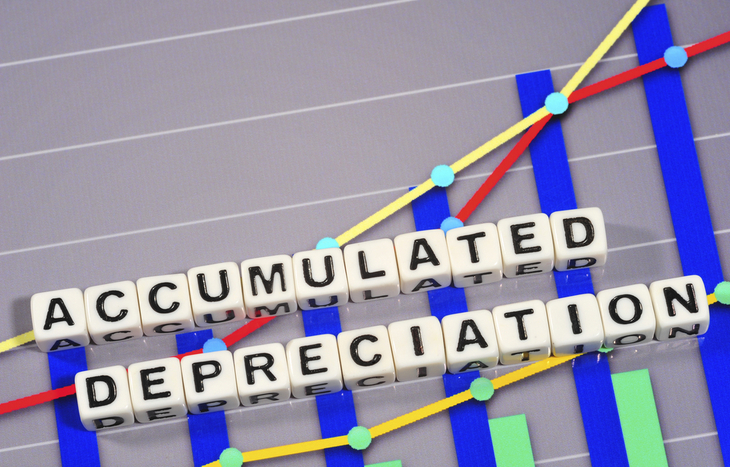What is Accumulated Depreciation? Definition and Example
Every investor should look at a company’s balance sheet. It tells you how much money the company has, owes, and what’s left over when you put the two together. But to properly value a company, you need to understand what it all means. One thing you may not know is accumulated depreciation. That brings you to the question…
What is Accumulated Depreciation?
Accumulated depreciation is the sum of an asset’s depreciation expense. It’s calculated from the start of its use to a specific date. It’s also a contra-asset account. That means it decreases the balance in the asset’s account. To increase the accumulated depreciation, the company credits the account. At the same time, they debit depreciation expense.
Note accumulated depreciation can never be more than the original price. At the end of an asset’s useful life, the original cost minus the accumulated depreciation should equal the asset’s salvage value.

Accumulated Depreciation Formula
Accumulated depreciation is the sum of all the depreciation expenses since the asset first started being used. There are different depreciation methods that determine how much depreciation is expensed every year. Each has a different formula. There are four common methods:
- Straight-Line:
The most common and the easiest to calculate. In this method, the asset is depreciated by the same amount every year of its useful life.
- Double-Declining Balance:
An acceleration method used when the asset depreciates more quickly in the earlier years. It has a 2x factor.
- Sum-of-Year Digits:
This method applies a percentage to determine the depreciation value. Like double-declining, this is an accelerated method.
- Units of Production:
A method of depreciation based on asset usage, mostly used by manufacturers. Their machinery’s usage varies with customer demands. It is a more accurate representation of wear on the machinery or equipment.
For more information, check out our page on depreciation expense.
Example of Accumulated Depreciation
A company buys a machine for $200,000. It has a salvage value of $20,000 and a useful life of 10 years. In this example, we’ll use the straight-line method. To determine the depreciation expense, the formula is:
(200,000 – 20,000) / 10 = 18,000
Every year, the company debits $18,000 to depreciation expense. And every year, accumulated depreciation is credited $18,000. Each year the $18,000 is added to the balance from the year before.
Accumulated Depreciation |
|
|---|---|
| Dec. 31, 2017 | $18,000 |
| Dec. 31, 2018 | $18,000 |
| Dec. 31, 2019 | $18,000 |
| Ending Balance | $54,000 |
The machine’s accumulated depreciation at the end of 2019 is $54,000.
Depreciation can be a tricky topic. To get a deeper understanding of how company’s determine their reported depreciation, check out Depreciation Expense. And don’t forget to sign up for our free e-letter! It’s packed with useful investment tips.
About Amber Deter
Amber Deter has researched and written about initial public offerings (IPOs) over the last few years. After starting her college career studying accounting and business, Amber decided to focus on her love of writing. Now she’s able to bring that experience to Investment U readers by providing in-depth research on IPO and investing opportunities.





